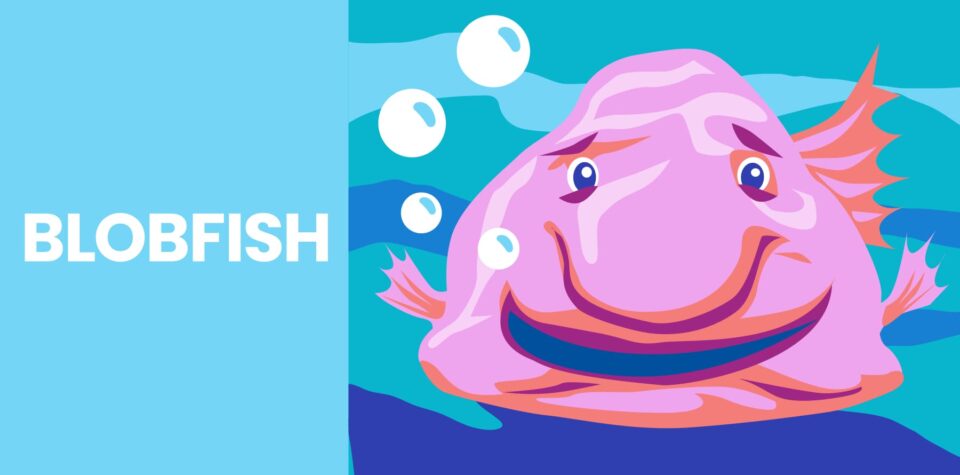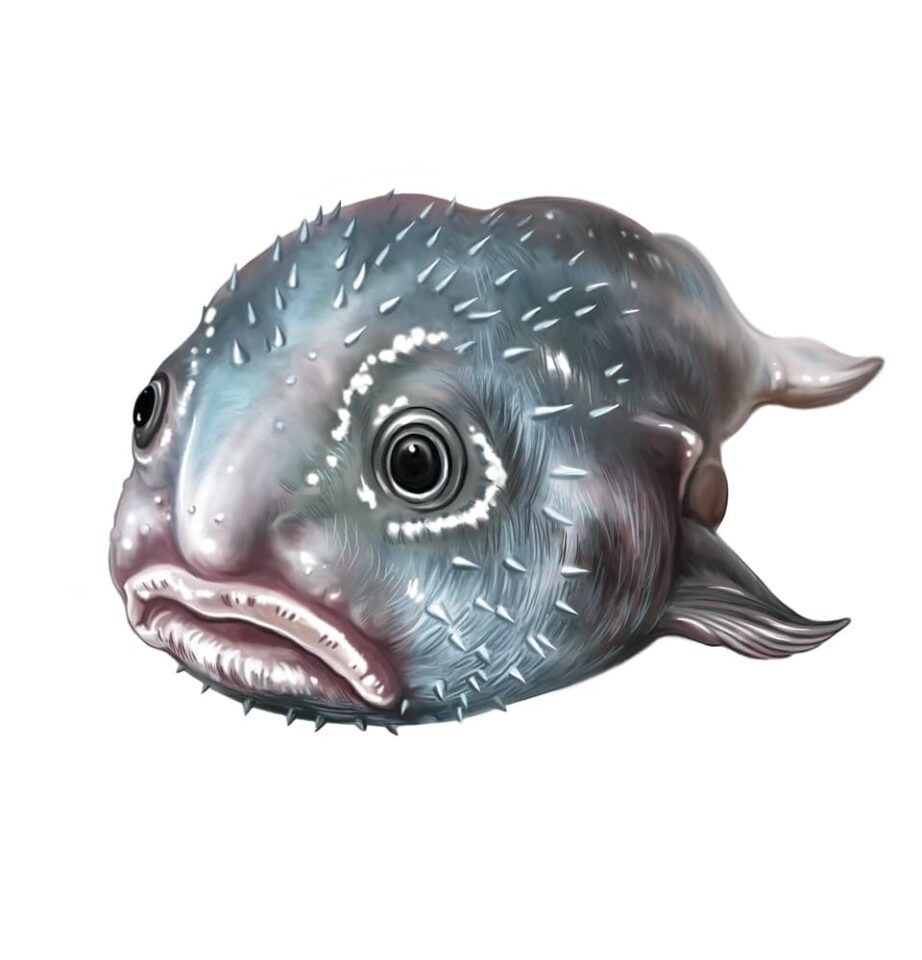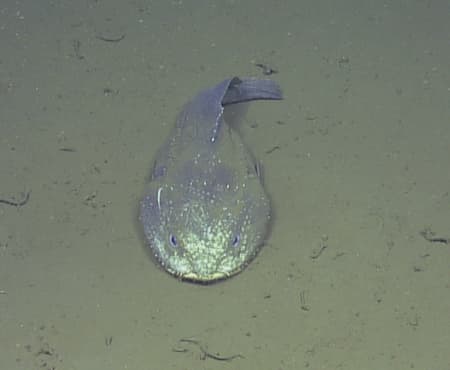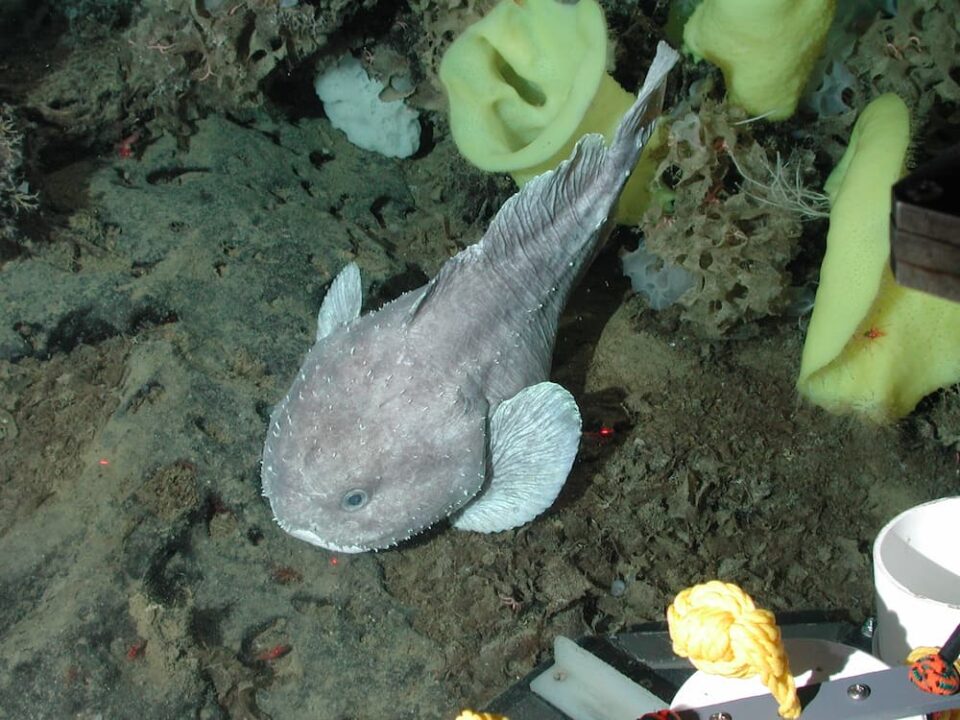
Blobfish
Blobfish were named the ugliest animal in the world in 2013 by the Ugly Animal Preservation Society. They won the title after the society’s voters saw a photograph of a blobfish out of water. The fish in the picture looks so strange that some people doubt it really exists when they see it!
Are Blobfish Real?

Blobfish are real, though. Their scientific name is Psychrolutes, and there are multiple species of them, from the deep-sea blob sculpin to the fathead sculpin. They snap up small sea creatures, tussle with octopuses under the ocean, and drift along beneath the sea without worrying much whether humans think they’re ugly or not!
When the blobfish is underwater, it looks a lot like other fish. And it swims and lives in ways uniquely suited to its deep-sea home.
Characteristics
Blobfish are adapted to life in deep, cold ocean waters. Down where they live, water presses on animals’ bodies up to 280 times more than the air does at sea level. A human being couldn’t survive that kind of pressure, but the blobfish can!
That’s because blobfish bodies can handle being squeezed by lots of water pressure. Blobfish have few bones, and the ones they do have are thin and weak. But between their skin and their muscles, blobfish have a layer of jellylike tissue that helps them float when they’re in the water.
While they’re swimming, all that droopy flesh might make it hard for deep-sea predators like octopuses to grab hold of a blobfish. Outside of the water, though, the jellylike tissue oozes downward, which is why blobfish look so strange when they’re brought to the surface.
What Does a Blobfish Look Like Underwater?
Underwater, blobfish look a little like puffer fish. They have a big, round head with leaflike fins on either side to help them swim. Their bodies taper back into a long tail behind their head, and their skin is dotted with little spikes.
Blobfish faces look a little cartoonish to a human. They have a big, round, black eye—sometimes ringed in gold—on each side of their head. Their mouths are big, too, with a wide mouth that droops in a pouting expression.
When they move, though, blobfish are graceful and surprisingly fast. They drift slowly through the water until they find prey, and then they strike in an instant to gobble it up.
What Do Blobfish Eat?
Blobfish will eat just about anything. Scientists know this because when they dissect blobfish brought up from the ocean floor they find all kinds of things in their stomachs—including rocks! Blobfish eat snails, fish, sea anemones, hermit crabs, and even octopuses.
When a blobfish finds its prey, it switches from slow, drifting swimming to a fast, snakelike strike. It turns to face the prey, darts forward, and snaps open its huge mouth. Its food disappears in an instant!
Because of this hunting strategy, blobfish have few of the muscles that let animals (including people) travel long distances. Instead, most blobfish muscles are a special kind that lets it move in quick bursts.
Where Do Blobfish Live?

Blobfish live deep in the Indian, Pacific, and Atlantic Oceans. The closest they get to the surface is over 300 feet down, and they’ve been spotted over 9,000 feet under the sea before! Blobfish also need cold water to live in. Temperatures just above freezing are the best for them. To find water that’s the right temperature, they live in places where the ocean is very deep or in cold waters far from the equator.
The floor of the deep sea where blobfish live is often barren, rocky, and muddy. In many parts of the deep sea, there isn’t much life, which may be one reason blobfish have a low-energy hunting strategy. But blobfish have also been spotted on the Davidson Seamount off the coast of California, a rich undersea mountain habitat dotted with corals, sponges, crabs, shrimp, and more. A lot of the ocean floor is unexplored, and scientists may find blobfish in new places as they map it!

